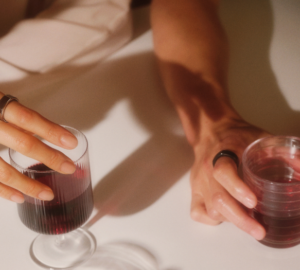Researchers at Oura partnered with the University of Oulu to explore whether Oura Ring temperature data could be used to monitor menstrual cycle phases and predict menstruation and/or ovulation.
Monitoring temperature for fertility and cycle tracking has traditionally relied on a single data point each day – using morning oral thermometer measurements to estimate core temperature. This method is known as basal body temperature (BBT) and can help individuals spot when their temperature runs warmer during the luteal phase (post-ovulation) vs. colder during the follicular phase (pre-ovulation) due to changes in estrogen and progesterone levels.
Oura’s temperature sensor differs from the standard oral thermometer because it measures temperature data once every minute, continuously throughout the day.

As a result, this paper is the first to demonstrate that this same “bi-phasic” temperature pattern (higher luteal temperatures vs. lower follicular temperatures) can be captured in a wearable measuring skin temperature from the finger.
Read the full study in Boston Medical Center Women’s Health (BMC) or explore the key takeaways below.
Study Design
Twenty-two women worked with the research team to track several sources of data over ~3 cycles:
- Oura Ring’s continuous skin temperature data
- A single oral temperature reading each morning (BBT)
- Daily urine tests to detect pre-ovulatory LH surges (the body’s hormonal “go!” signal for ovulation)
- Menstruation diaries to confirm period dates
What did they find?
This pilot successfully shows that Oura’s temperature data has the potential to be used in menstrual cycle monitoring or algorithms used for fertility detection.
- Oura’s skin temperature data captures the bi-phasic temperature pattern of follicular and luteal
- Oura’s skin temperature data can detect temperature increases around the LH surge
- Oura’s skin temperature data can detect temperature decreases nearing menstruation
- Cycle length varied between 21-50 days (mean 27.6, SD 4.4)
- Ovulation dates varied between cycle day 9-31 (average 13.9, SD 4.3)
What does this mean for you?
While Oura does not yet have a formal cycle tracking feature, Oura temperature data makes it possible to monitor the phases of your menstrual cycle.
In the future, individuals may be able to set aside oral thermometers for more effortless solutions like wearables which can help build more personalized tools for cycle monitoring and fertility solutions.











